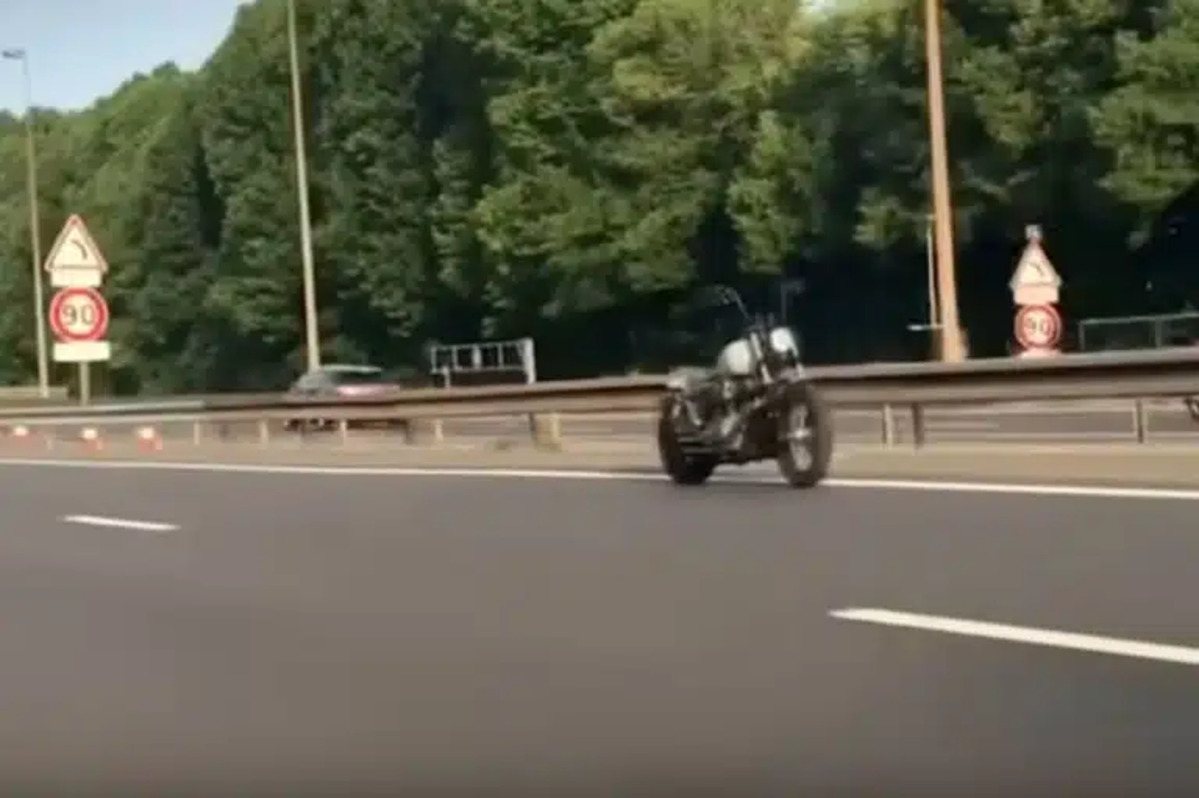In 2022, a surreal clip lit up social media: a riderless Harley-Davidson gliding down the A4 toward the gates of Paris. Was it a ghost bike? A self-driving prototype? Or just a very lucky—if alarming—fluke? After months of speculation, the answer turned out to be simpler, and more human, than anyone expected.
Not magic, not a ghost: the truth
There was no invisible pilot and no paranormal push guiding the Harley-Davidson down the A4. The bike was a Dyna Street Bob, and several drivers filmed it breezing along with an empty saddle and steady line.
Conspiracy theories bloomed. Some swore the video was staged; others hinted at hidden gyros or secret autonomy. In reality, said Harley-Davidson, the spectacle was the product of physics, geometry, and timing—nothing more exotic than momentum and a very stable chassis.
“Once the engine speed, gear, and balance align,” the company explained, “a motorcycle like the Dyna can momentarily maintain direction on its own. It isn’t intelligent—just stable.”
A story that began with a crash
Behind the viral moment lay a frightening incident. According to the owner, the rider was cruising the A4 toward Paris when a car drifted into his lane. Forced to the ground, he slid for several meters and separated from the bike.
Then came the twist: the Harley popped upright and kept rolling. The driver involved in the collision rushed the injured motorcyclist to a hospital, while the rider—stunned and hurting—alerted the police that his machine was still motoring down the highway. Imagine that call.
How a motorcycle kept itself upright
The Dyna Street Bob is built around a low stance and long wheelbase, a layout known for natural stability. At sufficient speed, a motorcycle’s spinning wheels act like gyroscopes; the steering geometry (rack, trail, and weight distribution) self-corrects tiny wobbles. On a straight, smooth motorway, those forces can keep a bike tracking forward—briefly—even without a rider.
In this case, with the throttle still open enough to sustain speed, the Harley found a balance point and carried on. The tires’ mass, the fork angle, and the long chassis damped disturbances. In short, physics did the steering the rider no longer could.
Key factors that aligned in this rare event:
- A long wheelbase and low center of gravity that resist sudden tip-overs.
- Adequate speed for gyroscopic stabilization of the wheels.
- Neutral steering geometry (rake and trail) that self-centers under small inputs.
- A straight, well-marked stretch of motorway that reduced directional challenges.
- Proper tire balance and pressure helping to minimize shimmy.
- A steady throttle position that sustained forward momentum.
It’s a sequence akin to a coin landing on edge—possible, but vanishingly rare. Most riderless bikes topple within seconds. This one found its groove and held it.
From the A4 to Quai de Bercy
Witnesses followed the lone Harley for several kilometers as it ghosted down the right lane. Reports put the journey at roughly five kilometers, its path true enough to avoid cars and barriers. Traffic ebbed around it, gawking but mostly giving space.
Near the quai de Bercy, officers moved to intercept. With careful coordination, the police brought the machine to a safe stop. No secondary crashes. No injuries to others. Just the improbable sight of a warm, idling V-twin and an empty seat.
A lucky ending, and a lesson in design
The rider suffered only minor injuries and recovered quickly. The motorcycle—scraped but intact—unwittingly delivered a masterclass in chassis poise. It was never designed to ride itself, but its proportions and balance made a freak occurrence look like a planned stunt.
Was it an advertisement? Not intentionally. Yet the episode underscored the Dyna Street Bob’s calm manners at speed and how robust Harley-Davidson engineering can be under stress. Even so, the takeaway is not that bikes can be trusted to self-steer; it’s that good geometry forgives small errors—and, once in a blue moon, does something jaw-dropping.
Myth, reality, and responsibility
It’s tempting to romanticize the footage or to brand it as proof of hidden tech. In truth, it was a chain of coincidences that ended as well as anyone could hope. The rider did the right thing by calling authorities immediately, and the motorists did the right thing by keeping distance.
Let this be a reminder:
- Maintain your tires and check pressures—stability starts at the contact patch.
- Keep controls and throttle cables in top condition.
- Leave margin on high-speed roads; surprises happen fast.
- If you witness an incident, prioritize safety and alert emergency services.
The mystery is solved, and the magic is simply mechanics. A stable platform, a bit of speed, and a straight road converged into a spectacle we won’t soon forget—equal parts physics lesson and urban legend, with a mercifully happy ending.
